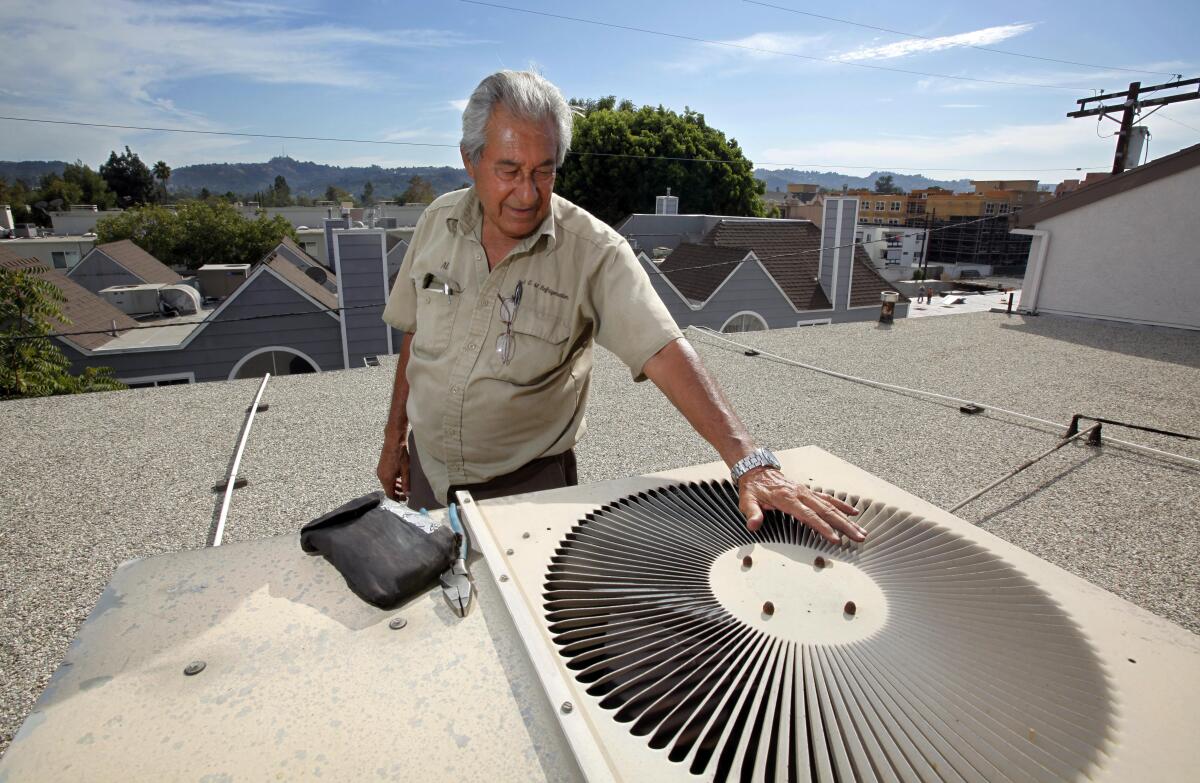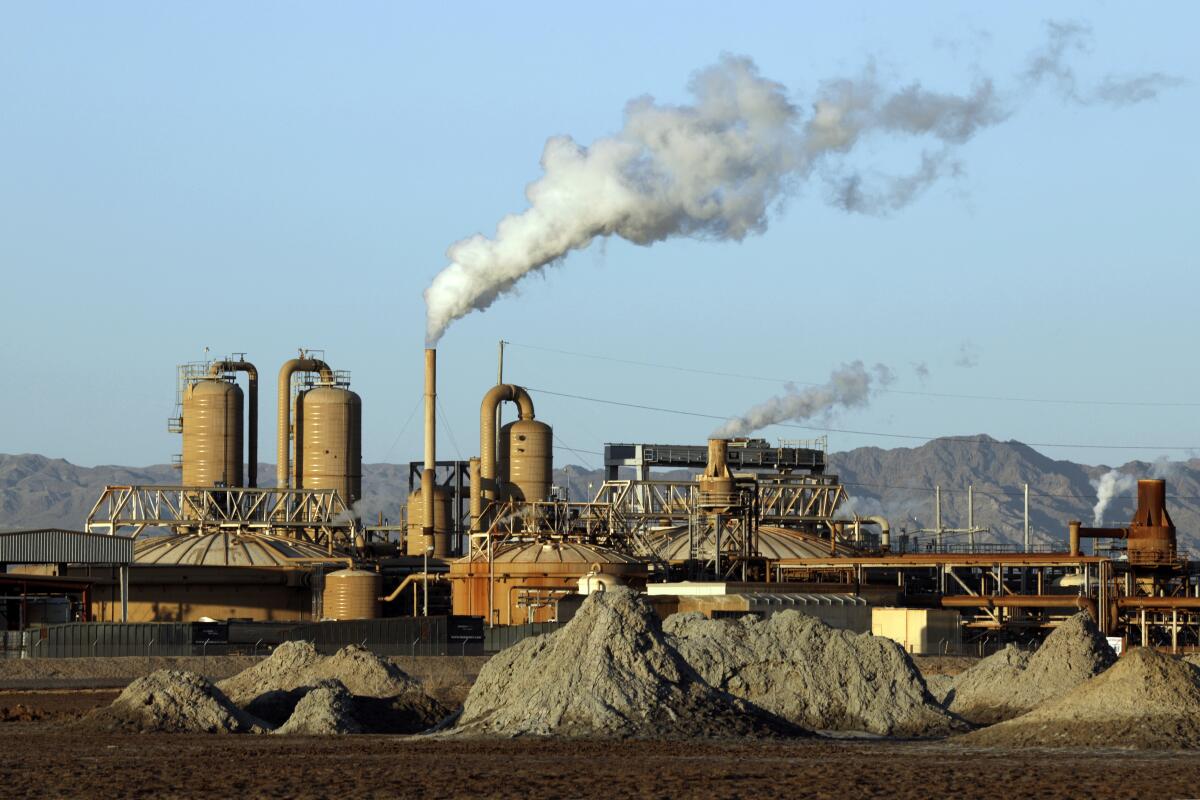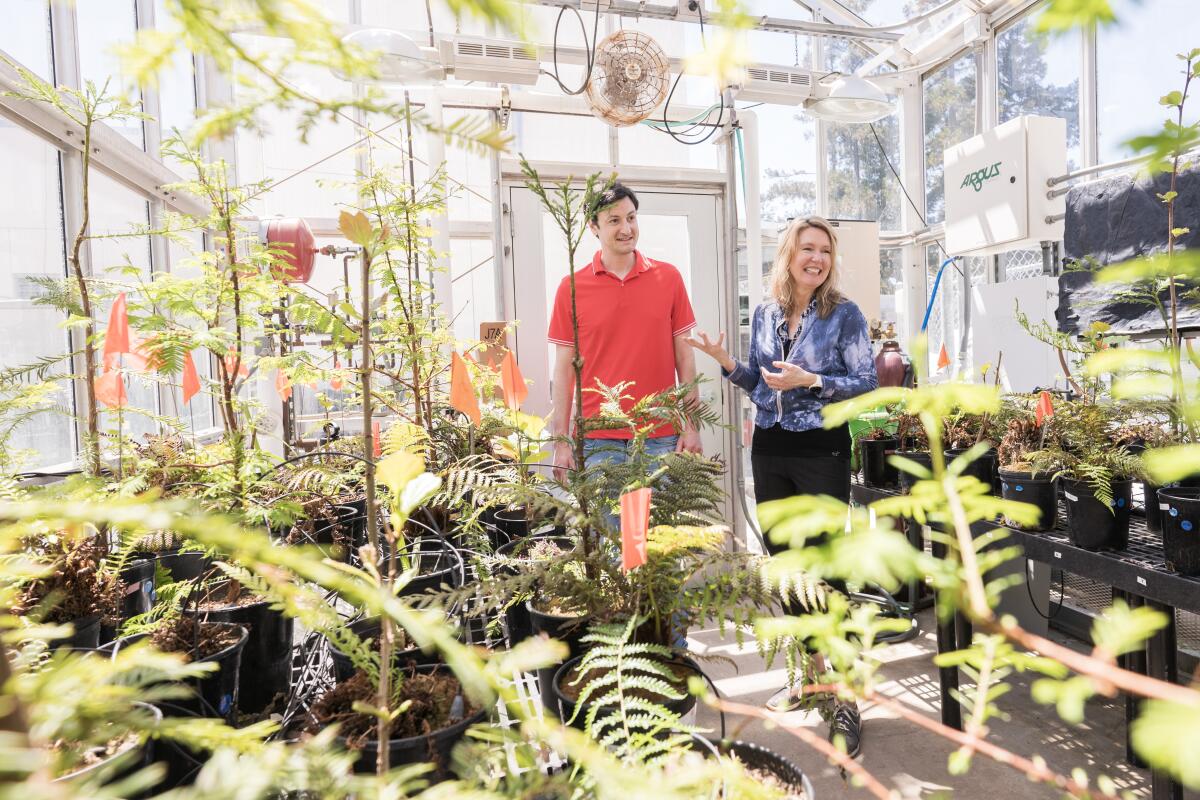Boiling Point: Where’s the urgency?

- Share via
This story was originally published in Boiling Point, a newsletter about climate change and the environment. Sign up here to get it in your inbox.
Americans are worried about climate change, and they want political leaders to do something about it.
So many polls have reached that same conclusion I’m almost tired of reading about them. The latest version comes from UC Berkeley and was co-sponsored by the L.A. Times. It found two-thirds of California registered voters expect volatile fluctuations between dry and wet weather to become more common due to climate change, as my colleague Hayley Smith reports.
I wrote about similar poll results last year, noting strong support among Angelenos in particular for expanding public transit, removing water-wasting grass and banning gas hookups in new housing. National surveys have shown that a large majority of Americans are concerned about climate and want to see government support clean energy at the expense of fossil fuels.
It’s not hard to figure out why people feel that way.
Just this week, Arizona’s governor said she won’t allow new subdivisions in parts of the Phoenix area because of projected water shortages, my colleague Ian James reports. With wildfire risks getting worse across the West, Allstate joined State Farm in saying it would no longer sell new home insurance policies in California. And Golden State residents are still recovering from this winter’s extreme storms, with state officials finally announcing $95 million to support undocumented flood victims.
California has long been a leader in climate action, and the federal government is starting to follow suit.
The Inflation Reduction Act signed by President Biden last year has ignited a clean energy manufacturing boom — especially in red states, Canary Media’s Julian Spector reports. The federal Bureau of Land Management says it will distribute $161 million in Inflation Reduction Act funding for landscape restoration across the West, per Alanna Madden at Courthouse News Service.
But if there’s such strong public support for reducing planet-warming emissions, why aren’t we doing more?
Part of the answer is politics. Republican Party leaders are still largely beholden to fossil fuel industry campaign funders — and to conservative primary voters who are some of the only Americans not taking the climate crisis seriously. Many leading Democrats, too, are wary of upsetting oil and gas companies that contribute to their campaigns, and that are still a big source of jobs.
The other half of the equation is priorities.
Although most Americans will tell you they’re worried about climate if you ask them about it specifically, they still rank the issue relatively low on the priority list compared with traditional bread-and-butter issues such as the economy, healthcare and public safety. As if rising temperatures don’t have a dramatic influence on the economy, public health and our physical well-being.
So how do we bridge that gap between the public’s desire for action and the lack of urgency?
More and better media coverage would almost certainly help. So would more movies and TV shows featuring climate stories. And there’s no substitute for old-fashioned conversation. If you care about this stuff, bring it up with your friends and family.
If you’re looking for conversation starters, here’s what’s happening around the West:
POLITICAL CLIMATE

As temperatures rise, Los Angeles studying what it would take to equip every rental unit in the city with air conditioning. There’s no more deadly type of weather event than extreme heat, with thousands of deaths over the last decade even in relatively mild California. Making sure people have air conditioning could limit the harm — but landlords are already pushing back against a proposal being floated at L.A. City Council to require AC units, The Times’ Nathan Solis reports. In Sacramento, meanwhile, a bill approved by the state Senate would require schools to cool down outside play areas, possibly by planting shade trees or replacing asphalt surfaces. The bill now awaits a vote in the state Assembly, Sophie Austin reports for the Associated Press.
U.S. Interior Secretary Deb Haaland extended a ban on new federal oil and gas leasing within 10 miles of New Mexico’s Chaco Canyon National Historical Park for the next 20 years. The ban — which is designed to safeguard the ruins of ancient Indigenous civilizations from fossil fuel extraction — was celebrated by some tribal leaders and criticized by others, as Dan Boyd reports for the Albuquerque Journal. Also in the Land of Enchantment, state officials banned new oil and gas leases on state trust lands within a mile of schools, the Journal’s Dan McKay reports. New Mexico is definitely feeling the heat of climate change, with wildfires beginning to permanently reshape some of the state’s forests, McKay writes.
How do you change a place as polluted and desperately unequal as the San Joaquin Valley? So asks Mark Arax in a fabulous piece for the New York Times Magazine, profiling three environmental justice activists leading the fight for clean air and water in California’s heartland. In other environmental justice news, my colleague Tony Briscoe writes that California will publish detailed records of work to remove lead-contaminated soil from properties near the former Exide battery recycling plant in southeast L.A. County, following a Times investigation. Los Angeles school district officials, meanwhile, are negotiating with a metal recycling plant that has faced allegations of releasing sharp pieces of metal, smoke, fumes and other hazards onto an adjacent high school in Watts, a predominantly Latino and Black neighborhood. Here’s the story from The Times’ Marissa Evans.
WATER IN THE WEST
Several bills in the California Legislature would make it easier for the state to cut back on water diversions from rivers during drought — and penalize violators. But the agriculture industry and urban water suppliers are pushing back, with one critic saying the legislation “attempts to destabilize the water rights system in California,” my colleague Ian James reports. It’s only the latest battle over Western water laws and customs that often date back a century or more. Another battle is playing out in Nevada, where a court will decide whether ranchers have a right to use water that seeps through unlined irrigation canals into the ground. Details here from Scott Sonner at the Associated Press.
All that winter snowpack flooding California is bringing back parts of the Pacific Flyway, which is great for migratory birds. But shallow, warm waters could also fuel botulism outbreaks and mass die-offs, The Times’ Susanne Rust reports. Every silver lining has a cloud. In better news, High Country News’ Caroline Tracey writes that plans to limit groundwater pumping in the San Joaquin Valley could pair nicely with efforts to improve air and water quality and access to clean drinking water.
The Supreme Court is expected to rule any day in a consequential Colorado River case dealing with the Navajo Nation, and whether the U.S. government has an obligation to provide the tribe with more water. Here’s the story from the Arizona Republic’s Joan Meiners, who writes that public health and climate resiliency are at stake for the Navajo Nation. And by the way, if you want to do your part to reduce water consumption in the drying American West, my colleague Adam Tschorn wrote about a super useful tool for figuring out how to use less water and find leaks in your home.
THE ENERGY TRANSITION

Gov. Gavin Newsom wants the state to buy offshore wind and geothermal power to supply California residents, to make sure the lights stay on as fossil fuels are phased out. Utility companies have thus far largely declined to buy those relatively high-cost resources, but experts say they may be needed to complement solar and onshore wind — hence Newsom’s plan, which Adam Beam wrote about for the Associated Press. Ensuring reliable power supplies will be even more important if many homes transition from gas to electricity for heating. A recent court ruling rejecting Berkeley’s first-in-the-nation ban on gas in new homes could slow the shift to all-electric homes, but the city is now appealing that ruling, per Katie Lauer at the Mercury News.
Beefing up California’s power grid to handle millions of electric cars could cost $50 billion over the next decade. That’s according to a recent analysis commissioned by state officials, as reported by Canary Media’s Jeff St. John. And that’s on top of a need to build lots of wind turbines, solar farms and power lines. How do we keep the costs as low as possible, to keep utility bills from spiraling out of control? Sharing more electricity across different regions of the country could help, some experts say — but California could be caught flat-footed as an Arkansas-based energy market looks to expand West, Kavya Balaraman reports for Utility Dive. Another idea is forcing monopoly electric utilities to bid against independent companies to build new power lines, rather than continuing to give those monopolies “right of first refusal,” as Dan Gearino writes for Inside Climate News.
Former U.S. State Department and nuclear regulatory officials say Bill Gates and the Biden administration shouldn’t use bomb-grade uranium for a small nuclear reactor test in Idaho, because doing so would encourage other countries to do the same. Details here from Reuters’ Timothy Gardner. In other nuclear energy news, Jeff Amy reports for the Associated Press that one of the nation’s first new nuclear reactors built from scratch in decades is now generating electricity in Georgia — many years behind schedule and tens of billions of dollars over budget.
AROUND THE WEST
A lot more great white sharks are hanging out off the California coast for longer than once thought — and the climate crisis may help explain it. You probably shouldn’t worry about the sharks, though, my colleague Christian Martinez writes. In other wildlife news, a wolverine was spotted in California for just the second time in a century, The Times’ Jeremy Childs reports. Washington state officials, meanwhile, are pioneering a new funding model for wildlife conservation that isn’t so dependent on hunting and fishing fees — and protects non-game animals, too. Here’s the story from Stateline’s Alex Brown.
Pacific Gas & Electric avoided criminal prosecution in the deadly Zogg fire, which killed four people, by agreeing to a $50-million settlement with Shasta County. Most of the money will be used to improve fire safety and emergency preparedness, Jeremy Childs reports. In other wildfire news, CalMatters’ Julie Cart reports that a bill moving through the California Legislature would make it easier for firefighters and other first responders to get mental health care for PTSD. And in this week’s strangest story, California goatherders say they won’t be able to keep using their grazing beasts to reduce wildfire risks if California forces them to start paying employees hourly, rather than monthly. My colleague Grace Toohey has the details.
Delta Air Lines has been sued by a Nickelodeon writer in Glendale, who says the company’s carbon offsets are a crock of bull. Delta has billed itself as the “first carbon-neutral airline,” but critics say carbon-offset initiatives such as Delta’s — in which big companies pay to protect forests and support renewable energy — don’t actually do much to reduce emissions, and mostly help polluters greenwash their public image. The Associated Press’ Ed Davey wrote about the case against Delta.
ONE MORE THING

I have no interest in seeing the end of the world.
But in a laboratory, it sounds pretty cool.
My colleague Corinne Purtill wrote a fascinating story about scientists trying to recreate the conditions immediately after a giant asteroid hit Earth 66 million years ago, to better understand why certain plants were able to survive. Their experiment played out in a greenhouse at UC Santa Cruz, and is based on the premise that if we can learn how a certain type of fern was able to recover when so many other species couldn’t, we might do a better job helping ecosystems survive the cataclysms of today.
Studying death to support life. Science!
We’ll be back in your inbox on Thursday. To view this newsletter in your Web browser, click here. And for more climate and environment news, follow @Sammy_Roth on Twitter.
Toward a more sustainable California
Get Boiling Point, our newsletter exploring climate change, energy and the environment, and become part of the conversation — and the solution.
You may occasionally receive promotional content from the Los Angeles Times.






